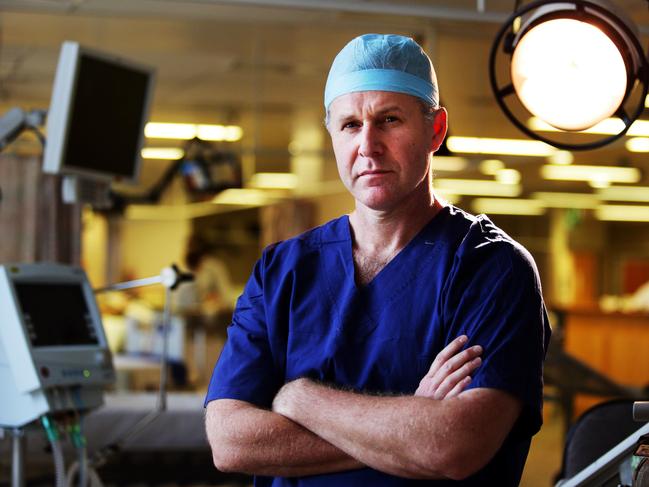NSW hospitals bring back Covid measures as cases continue to rise
As health authorities brace for a third Covid wave, hospitals are refusing to wait for bureaucrats to act — instigating their own virus protection measures, including limiting visitors and mandating masks.
NSW Coronavirus News
Don't miss out on the headlines from NSW Coronavirus News. Followed categories will be added to My News.
NSW hospitals are going rogue and bringing back Covid prevention strategies from previous waves of the pandemic despite no new directives from NSW Health.
Local health districts are slashing the number of visitors, ramping up surveillance testing at hospitals, and mandating N95 face masks and goggles for staff because doctors fear the third wave of Covid will surpass previously seen hospitalisation figures.
Wollongong surgeon Dr Bruce Ashford was co-chair of the hospital’s Covid taskforce last year and said clinicians on the frontline will not wait for bureaucrats to change guidelines.
“Experienced clinicians are coming back to the coalface where these decisions are concerned.
“We don’t care about guidelines if we feel they don’t meet the situation. We are the ones who understand the problem. Guidelines are just guidelines,” he said.

Dr Ashford said the Illawarra Shoalhaven local health district had increased surveillance testing, limited visitors to patients, mandated N95 masks for all staff, and were asking more questions from visitors about symptoms they might have.
“We’ve increased our use of N95 in all our wards … We are decreasing our visitors, increasing testing on patients,” he said.
“People are coming in for appendicitis or to have a baby. We can’t just wait until they become infectious. We have to make sure we are doing everything we can.”
Although there was no official pause on elective surgery, Dr Ashford said doctors were making “hard decisions” every day on who they could treat.
“The risk is that the normal function of the health system is impacted by the density of effort put into dealing with Covid,” Dr Ashford said.
“The problem is more serious now than ever.”

The South Eastern Sydney local health district has also slashed visitors, to just two people at a time per patient since June 30 to cope with increasing Covid cases.
“We ask that patients are only visited by two (visitors) at the bedside at any one time,” the district said in an update.
The requirement goes beyond guidelines set by NSW Health which bar Covid cases and contacts, people with symptoms and international travellers from entering hospitals for a specific period of time, but have no limits on the number of visitors.
NSW Health also advises that P2/N95 masks should be worn when dealing with suspected or positive Covid patients and close contacts, but clinicians said widespread use was necessary because of rising community spread.
Central Coast LHD chief executive Scott McLachlan said his district had “taken steps locally” to manage the spiralling caseload, including making staff in emergency departments and inpatient units wear sturdier P2/N95 face masks and goggles.
“For optimal protection, all CCLHD clinical staff working in our emergency departments and inpatient units are now required to wear P2/N95 masks and eyewear at all times,” he said.
Health Services Union boss Gerard Hayes argued the customised rules would cause chaos for staff.
“Shouldn’t we have one consistent method of doing things? Not one view that is diversified in a range of views that come from a range of people,” he said.
“This is becoming very confusing to health professionals, let alone the public. The ministry of health should be the peak body in determining where we are going.”
But infectious diseases physician Professor Peter Collignon said the escalated measures were “reasonable” as long as they balanced physical and mental health needs.
“Limiting visitors, all of that, makes sense if you have a lot of community transmission. What you don’t want is no visitors. You don’t want 20 people turning up in people’s room, but you also need to look after people’s mental state,” he said.
Labor Health spokesman Ryan Park said it was important that health guidelines were consistent across the state. “We can’t have a situation where it’s a lottery depending on where you live as to the rules you will need to follow,” he said.
NSW Health said it was continually monitoring its guidelines and LHDs were allowed to make local policy changes.
“Each local health district takes steps locally to manage its infection control and prevention needs,” a spokesman said.
More Coverage
Read related topics:COVID NSW





